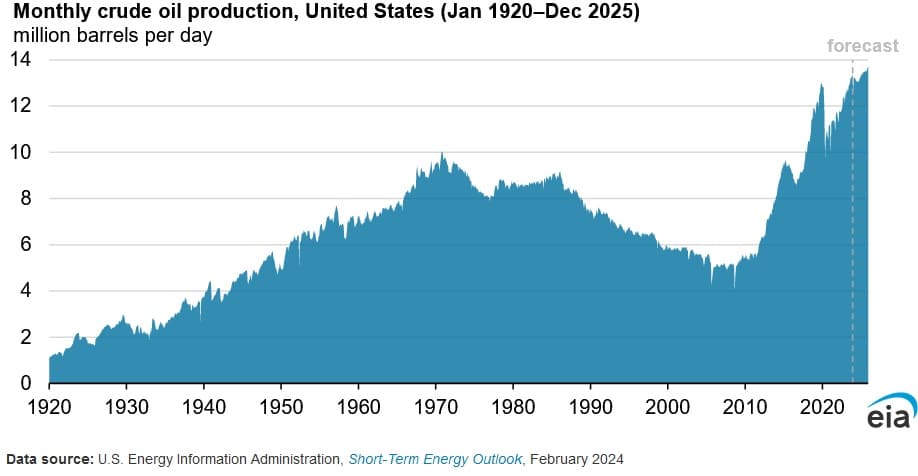U.S. Crude Oil Production Rises Due to Enhanced Wells Productivity: EIA

U.S. crude oil production has risen significantly over the last decade, in line with productivity increases at new wells according to a Mar .5 report published by the U.S. Energy Information Administration. The U.S. became the world’s largest crude oil producer in 2018 and as of October 2023 accounts for about 16 percent of total global crude oil output.
U.S. crude oil production reached record highs over the last six months, and is projected to average 13.25 million barrels per day during February 2024. The increase in crude oil production can largely be attributed to enhanced efficiency of new wells. Improvements in horizontal drilling and hydraulic fracturing technologies have enhanced well yield, allowing producers to extract higher volumes of crude oil from new wells, while at the same time continuing output from legacy wells. Historically, the number of new wells coming online was a key determinant of whether crude oil production increases or decreases, but now well efficiency is also a key component.
The increase in U.S. crude oil production is due to both an increase of new well production and higher sustained legacy well production. The agency reports that the share of legacy production, which can be defined as crude oil withdrawn after the preliminary 12 months, has been constant since 2021, while output from new wells has consistently risen.
Production has increased despite a decline in the number of active rigs since 2014. Historically, the number of active oil rigs were a key determinant of crude oil. However, more recently U.S. crude oil output has risen due to technological improvements and efficiency advantages. The number of new wells coming online has fluctuated on a yearly basis. The number of new wells reached a new high at 13,745 in 2014 before falling to 7,147 in 2020 due to the adverse economic effect of the COVID-19 pandemic. Since 2020, the amount of new crude oil wells has risen yearly, although at a slower rate.
The agency forecast crude oil production to decline during the first half of 2024, due to adverse weather conditions during the winter causing some operators to cease production.
EnerKnol Pulses like this one are powered by the EnerKnol Platform—the first comprehensive database for real-time energy policy tracking. Sign up for a free trial below for access to key regulatory data and deep industry insights across the energy spectrum.
ACCESS FREE TRIAL